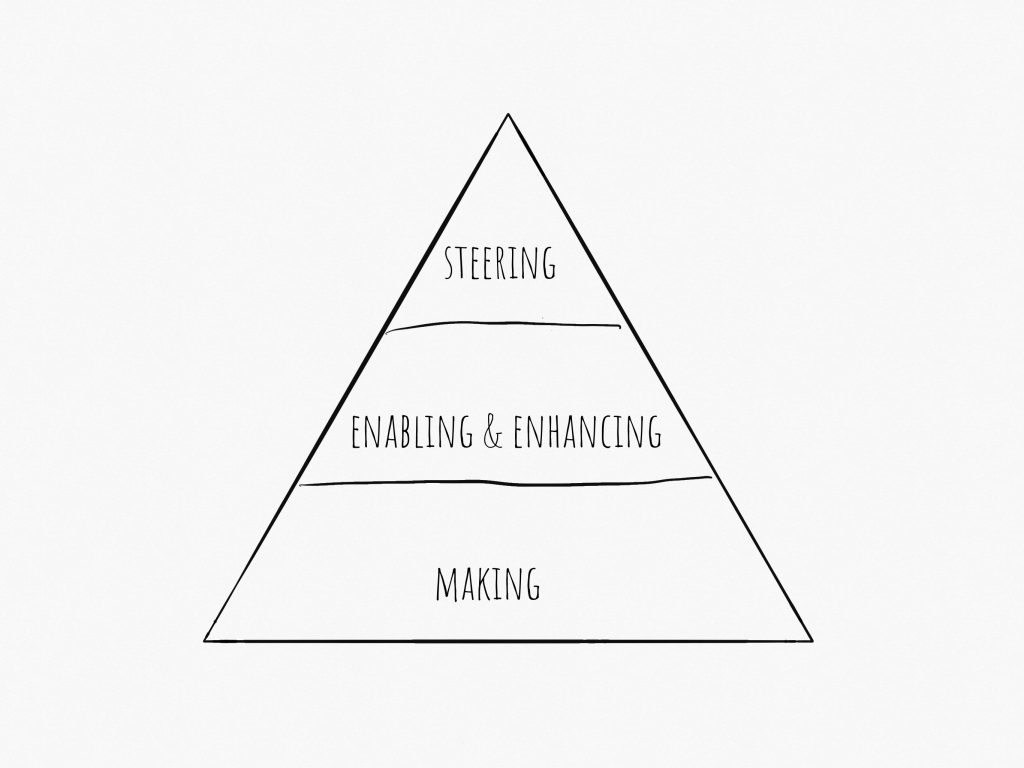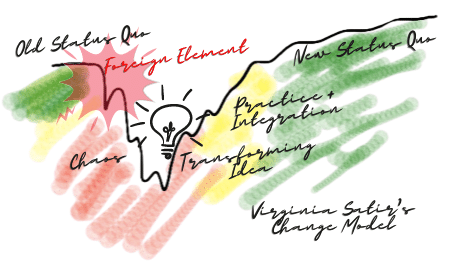Middle management gets a bad rap. The comic strip, Dilbert, depicts middle managers as clueless micro-managers. Obviously, Dilbert is a caricature. But something in it rings true enough that those cartoons show up in offices all over the world.
It is not just the comic strip. I regularly hear people disparage managers in the middle. I’ve even heard people call for eliminating middle management entirely.
However, I don’t agree. Middle managers can have a hugely strategic role in organizations. The shift is simple, yet profound: Refocus on enabling the people who do the work, and enhancing the system.
Enable People
In many organizations, middle managers focus on task supervision and getting people to work hard. Instead, they can focus on creating conditions where great work is the default. How? By taking these steps:

- Create the conditions for teams to thrive and step into greater responsibility.
- Ensure work flows smoothly into teams.
- Enable more team decisions by providing information, clarity, and boundaries.
Enhance the System
When managers aren’t supervising day-to-day work, they can focus on the system. That means looking beyond “their” teams. It means working with other managers to address issues that cross boundaries. Those issues could be obstacles, contradictions, and inefficiencies that get in the way.
Ground Strategy in Current Capability
Typically, middle managers implement strategies authored at the top. But they should have a role contributing to strategy. Middle managers have an understanding of both capacity and capability of teams. They know what is possible now. That’s crucial for actually achieving big audacious goals.
Furthermore, middle managers have a wealth of organizational knowledge. That knowledge includes domain knowledge, “greasing the skids” knowledge, and business knowledge about their organizations.
Tapping into what middle managers have to offer requires a shift in focus. Rather than getting people to work hard, make it easy for people to work well.









Great article!
Nice article. This is the perspective I have been advocating in my Agile Leadership training. I was a middle manager when we did our original transformation 11 years ago and learned some valuable lessons in Agile Leadership.